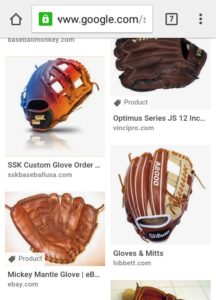Google announced last week monumental changes across three of its services that will affect retailers and products alike. Google Search Console, Merchant Center, and Manufacturer Center all received updates that may shake up the way products are displayed in search results. Chief among these is the inclusion of Google Merchant Center feed products in organic search results.
In a move that will entice more merchants to upload product feeds to Google Merchant Center, Google is making all approved product feeds “eligible to display in results on surfaces like Search and Google Images”, and even elaborates that “no payment is required or accepted for eligibility.”
Undoubtedly, there will be a number of merchants uploading feeds to Google Merchant Center for the first time. How many will take the next step and pay for Google Shopping ads? Will Google run new-user promotions to introduce newcomers to its Shopping platform? Results from new listings in organic results may not be enough.
Just where in the SERPs these new products are positioned remains to be seen, although Google states that “product information will be ranked based only on relevance to users’ queries”. If ranking is determined primarily by product information, with lesser weight given to traditional SEO ranking factors, this provides a huge opportunity for smaller retailers.
However, one must assume that Seller Ratings and other SEO factors will be appropriately considered when determining rank. In this case, larger sites that already rank well will be grabbing even more real estate in organic search results.
How Will Changes Affect Current Google Shopping Advertisers?
The biggest impact to current Shopping advertisers may be felt within Image results. Since Shopping ads always appear above or at least next to organic search results, the direct effect that free organic product listings have on Shopping ads may be negligible. Placements given to Image results, on the other hand, may raise eyebrows among paid advertisers.
Shopping ads began appearing in mobile Image results last April. Although ads are clearly marked with a “product” tag, they often appear intermixed among organic Image results. It’s unclear how free product images will be ranked and tagged, and there is currently no way for paid advertisers to opt out of Image results within Google Shopping campaigns. All the same, Google advertisers should pay close attention to their Shopping campaigns for changes in performance.
What Will Organic Search Results Look Like?
Organic results for product searches may not look much different than they do now. Product pages have already infiltrated organic search results. They are easy to pick out, just look for Google Product Rating stars below page URLs. The bigger mystery is whether or not smaller retailers will begin seeing more impressions among top organic results. Perhaps Google will cycle lower ranking product pages onto page one of SERPs at their own discretion. After all, a greater variety of options could mean a better user experience.

Image results with Shopping ads
Updates in Google Search Console and Google Manufacturer Center
The other two updates provide new features that help online retailers manage product information and search engine indexing. Verifying proper schema markup on pages can be a laborious task using Google’s Structured Data Testing Tool. A new report for ‘Products’ is now available in Search Console. The report displays pending markup issues for a site. Webmasters can even use the report to validate resolved issues by prompting Google to recrawl affected pages.
New features in the Google Manufacturer center promise to improve brand visibility and help customers find products. Now product content, including videos, can show up on the product’s knowledge panel. This may also encourage retailers to update their product information to more closely match that of the manufacturer.
Why Did Google Make These Changes?
On the surface, Google is incentivizing more retailers to upload feeds into Google Merchant Center. There is speculation that this a strategy to lure merchants away from Amazon. It is also moves merchants one step closer towards Google Shopping ads. Search Console and Manufacturer Center updates aim to systemize the use of structured data and make product information more consistent across retailers.
Whatever Google’s reasoning, merchants should heed these updates as a call to audit product feeds and optimize product information, including structured data markup.
